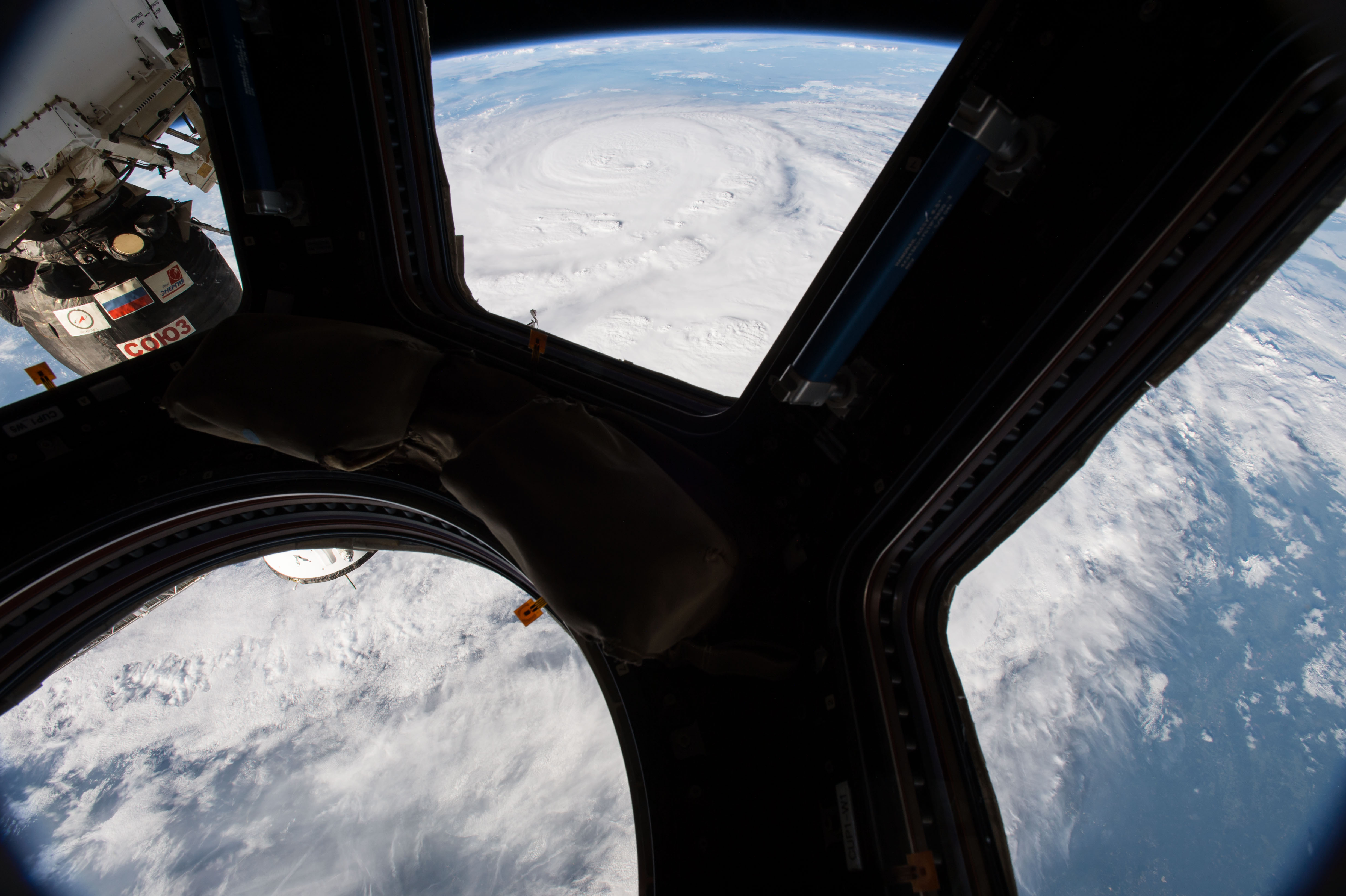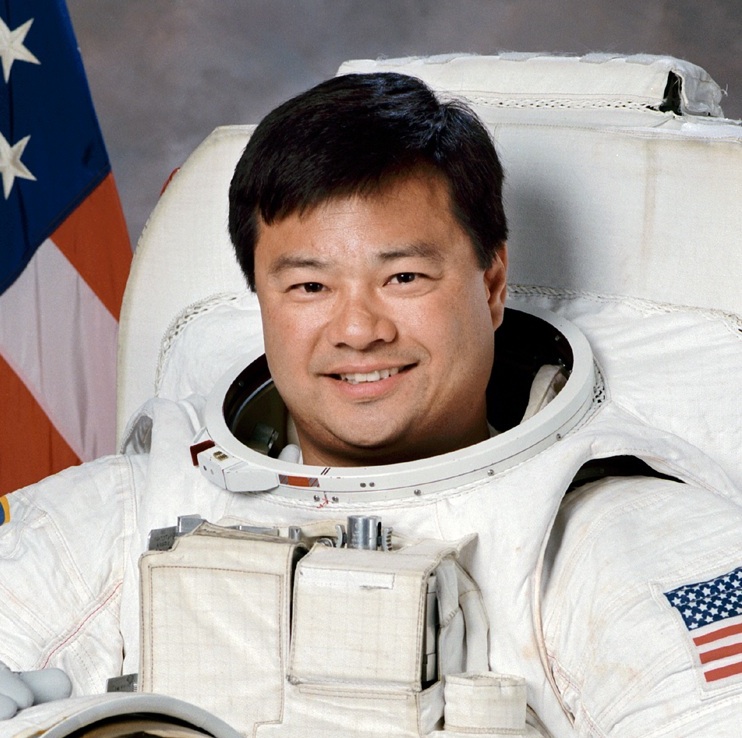
Hurricane from Afar: An Astronaut's Perspective

Dr. Leroy Chiao is the CEO and co-founder of OneOrbit LLC, a keynote, training and education company. He served as a NASA astronaut from 1990 to 2005 and flew four missions into space aboard three space shuttles and once as the co-pilot of a Russian Soyuz spacecraft to the International Space Station. On that flight, he served as the commander of Expedition 10, a six-and-a-half-month mission. Chiao has performed six spacewalks, in both U.S. and Russian spacesuits, and has logged 229 days in space. Chiao contributed this article to Space.com's Expert Voices: Op-Ed & Insights.
During my first spaceflight aboard Space Shuttle Columbia, I watched, incredulous, as Hurricane Emilia churned as a Category 5 storm. Fortunately, Emilia never made landfall, but the awesome power in the storm system was obvious, and made a deep impression on me.
Hurricane Harvey just roared through Texas, devastating large areas in and around Greater Houston. Harvey put a record-setting amount of rain in the area: a staggering 50-ish inches over the course of several days. This is more rain than most places see in a year. I was home with my family, and we were fortunate to get through the storm just fine.
Hurricane Irma, too, raged through Florida over the weekend, following its path of destruction through the Caribbean; it has since been downgraded to a tropical storm but continues to plow through the southern U.S. [See Hurricane Irma in Motion in These NASA and NOAA Gifs]
Being absent during disaster is disquieting, to say the least. Members of our armed forces and others go through this regularly. Cosmonaut Sergei Krikalev, one of the most experienced space travelers ever, had to be the loneliest human in history, when his country (the former Soviet Union) fell apart while he was alone aboard the Mir space station. Things got so bad that the staff left the mission control center, and for a while, he had no ground control.
The American astronauts aboard the International Space Station (ISS) had to first watch Harvey, and then Irma, wreak devastation from 400 kilometers (250 miles) up while their loved ones braved the storm below. Fortunately for me, I didn't have near that kind of experience during my 229 days in space. Although it was not the same but perhaps as remote, I watched from Russia as Hurricane Rita hit Houston in 2005 while my bride of barely a year was evacuating. Fortunately, she got out, and things worked out OK.
Three years later, Hurricane Ike was forming in the Gulf of Mexico while I was again in Russia. Just before getting on the airplane home, I noted that the forecast was for Ike to miss Houston. Breathing a sigh of relief, I boarded my flight. A check on conditions as I connected in Paris confirmed the earlier forecast. Landing in Houston several hours later, I learned that Ike had changed course and was heading directly toward us. The next morning, it was still barreling down on us, so I made arrangements to evacuate with my family, which had grown to include 2-year-old twins. We drove for over 6 hours in heavy traffic to get clear. We do what we have to.
Get the Space.com Newsletter
Breaking space news, the latest updates on rocket launches, skywatching events and more!
Natural and other disasters are a fact of life. If it's not hurricanes, then it's going to be earthquakes or tornados or something else. Like other stressors, we have to deal with them as they come. It is a lot more difficult when you are remote and are worrying about your loved ones at home. It is similar to what astronaut couples say; nothing is more difficult than watching your loved one launch aboard a rocket, but if it's you, it's fine. As humans, we don't like loss of control or uncertainty. Being remote during a crisis fits that bill.
Follow all of the Expert Voices issues and debates — and become part of the discussion — on Facebook, Twitter and Google+. The views expressed are those of the author and do not necessarily reflect the views of the publisher. Follow us @Spacedotcom, Facebook and Google+. Original article on Space.com.
Join our Space Forums to keep talking space on the latest missions, night sky and more! And if you have a news tip, correction or comment, let us know at: community@space.com.
Leroy Chiao is a former NASA astronaut and International Space Station (ISS) commander. Chiao holds appointments at Rice University and the Baylor College of Medicine. Chiao has worked extensively in both government and commercial space programs, and has held leadership positions in commercial ventures and NASA. Chiao is a fellow of the Explorers Club, and a member of the International Academy of Astronautics and the Committee of 100. Chiao also serves in various capacities to further space education. In his 15 years with NASA, Chiao logged more than 229 days in space, more than 36 hours spent in Extra-Vehicular Activity (spacewalks). From June to September 2009, he served as a member of the White House appointed Review of U.S. Human Spaceflight Plans Committee, and currently serves on the NASA Advisory Council. Chiao studied chemical engineering at the University of California, Berkeley, earning a Bachelor of Science degree in 1983. He continued his studies at the University of California at Santa Barbara, earning his Master of Science and Doctor of Philosophy degrees in 1985 and 1987. Prior to joining NASA in 1990, he worked as a research engineer at Hexcel Corp. and then at the U.S. Department of Energy's Lawrence Livermore National Lab. Dr. Chiao left NASA in December, 2005 following a 15-year career with the agency. Chiao studied chemical engineering at the University of California, Berkeley, earning a Bachelor of Science degree in 1983. He continued his studies at the University of California at Santa Barbara, earning his Master of Science and Doctor of Philosophy degrees in 1985 and 1987. Prior to joining NASA in 1990, he worked as a research engineer at Hexcel Corp. and then at the U.S. Department of Energy's Lawrence Livermore National Lab.










